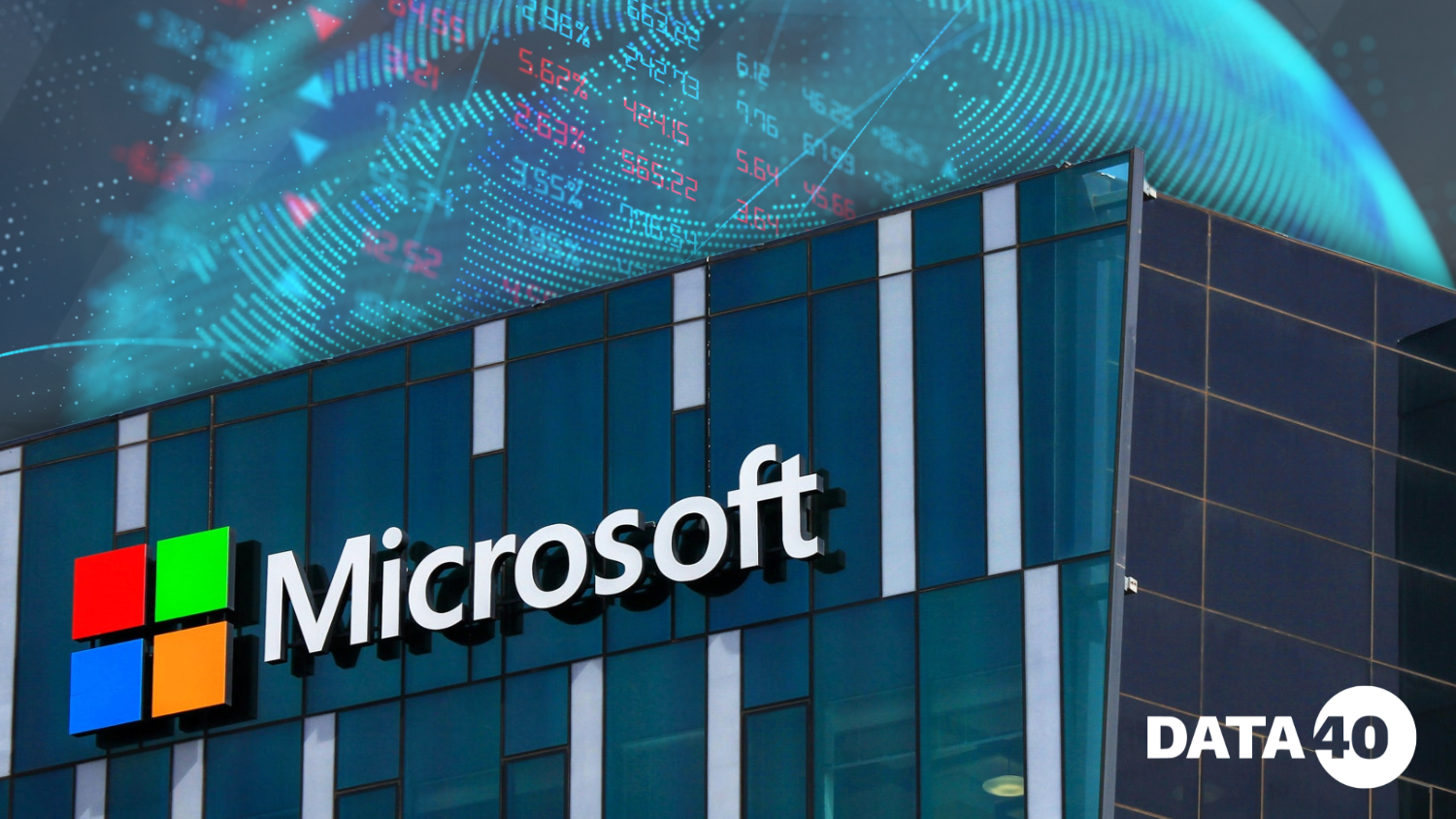

Microsoft Corporation, a global leader in technology, has consistently demonstrated a strong commitment to innovation and technological advancement. In 2024, this commitment is more evident than ever, as the company continues to invest heavily in research and development to stay at the forefront of the industry. With a focus on creating cutting-edge solutions that address the evolving needs of consumers and businesses alike, Microsoft aims to drive the digital transformation across various sectors. The company’s strategic initiatives and innovative product launches underscore its mission to empower every person and organization on the planet to achieve more.
In Q3FY2024, Microsoft has unveiled a series of groundbreaking products and technologies, further solidifying its position as a pioneer in the tech industry. These innovations reflect Microsoft’s dedication to enhancing user experience, improving productivity, and ensuring security, while also pushing the boundaries of what’s possible with modern technology. From advancements in artificial intelligence to enhancements in mixed reality and cloud computing, Microsoft continues to set new standards for technological excellence.
Summary of Key Financial Metrics
In the third quarter of the fiscal year 2024, Microsoft Corporation reported robust financial performance, underscoring its strong market position and strategic growth initiatives. The key financial metrics for Q3FY24 are as follows:
- Revenue: Microsoft reported a total revenue of $60.1 billion, reflecting a year-over-year growth of 11%. This increase was driven by significant growth across its diverse portfolio of products and services.
- Net Income: The company achieved a net income of $18.3 billion, up 8% compared to the same quarter last year, showcasing its ability to convert revenue into substantial profit.
- Earnings Per Share (EPS): Microsoft’s diluted earnings per share for Q3FY24 were $2.47, exceeding market expectations and highlighting effective cost management and operational efficiency.
Breakdown of Revenue Sources
Microsoft’s diversified revenue streams continue to be a critical strength, contributing to its stable financial performance. The breakdown of revenue by segment for Q3FY24 is as follows:
- Cloud Services (Azure): Azure remains a significant growth driver for Microsoft, with revenue increasing by 26% year-over-year. This growth is attributed to the ongoing digital transformation across industries and the adoption of hybrid cloud solutions.
- Productivity and Business Processes: This segment includes Office products and cloud services, LinkedIn, and Dynamics. Revenue from this segment was $16.5 billion, up 13% year-over-year. Office 365 Commercial revenue grew by 15%, driven by strong seat growth and higher average revenue per user (ARPU). LinkedIn revenue increased by 10%, benefiting from higher engagement and advertising demand.
- More Personal Computing: Encompassing Windows OEM, Surface devices, Xbox content and services, and search advertising. This segment generated $14.7 billion in revenue, marking a 5% year-over-year growth. Windows OEM revenue grew by 6%, reflecting strong commercial demand, while Surface revenue increased by 12%, driven by the launch of new devices. Gaming revenue saw a modest 3% increase, supported by steady Xbox hardware and services sales.
- Intelligent Cloud: Beyond Azure, this segment includes server products and enterprise services. Revenue in this segment reached $22.2 billion, up 18% year-over-year. Server products and cloud services revenue increased by 20%, underscoring strong demand for hybrid and cloud offerings.
- Other Segments: Other business areas, including enterprise services and advertising, contributed to overall revenue growth, with notable increases in demand for comprehensive enterprise solutions and digital advertising.
Comparison with Previous Quarters
When compared to previous quarters, Q3FY24 showcased a consistent upward trajectory in revenue and profitability:
- Q2FY24: Microsoft reported a revenue of $56.5 billion, net income of $17.2 billion, and an EPS of $2.35. The sequential growth from Q2 to Q3 underscores strong operational execution and market demand.
- Q3FY23: In the same quarter of the previous year, Microsoft reported a revenue of $54.9 billion, net income of $16.9 billion, and an EPS of $2.22. The year-over-year growth of 11% in revenue and 8% in net income highlights sustained growth momentum.
Expectations
Analysts had anticipated strong performance from Microsoft in Q3FY24, given the company’s strategic focus on cloud services, AI advancements, and enterprise solutions. The actual results exceeded these expectations, particularly in the cloud and productivity segments, which continue to be pivotal to Microsoft’s growth strategy. The company’s ongoing investments in AI and machine learning, along with its expansive ecosystem of products and services, are expected to drive further growth in the upcoming quarters.
Analysis of Microsoft’s Position in Key Markets
Microsoft continues to solidify its position as a leader in the cloud computing market, primarily through its Azure platform. In 2024, Azure’s market share has grown significantly, capturing approximately 23% of the global cloud infrastructure market. This growth is driven by Microsoft’s extensive cloud portfolio, including Infrastructure as a Service (IaaS), Platform as a Service (PaaS), and Software as a Service (SaaS) offerings. Azure’s hybrid cloud solutions, AI integrations, and strong security features have made it a preferred choice for enterprises transitioning to cloud environments.
Microsoft dominates the enterprise software market with its comprehensive suite of productivity tools and business applications. Office 365 remains the leading office suite globally, with over 345 million monthly active users in 2024. Dynamics 365, Microsoft’s cloud-based enterprise resource planning (ERP) and customer relationship management (CRM) solution, has seen a surge in adoption due to its robust functionality and seamless integration with other Microsoft services. The company’s enterprise software solutions are renowned for their reliability, scalability, and security, making them indispensable for businesses of all sizes.
In the consumer market, Microsoft maintains a strong presence with its Windows operating system, Surface devices, and Xbox gaming consoles. Windows continues to be the most widely used desktop operating system, with a market share exceeding 75% in 2024. Surface devices, known for their premium build quality and innovative features, have garnered a loyal customer base, particularly among professionals and creative users. The Xbox gaming ecosystem, with its expansive library of games and services like Xbox Game Pass, remains a dominant force in the gaming industry.
Comparison with Major Competitors

- Amazon Web Services (AWS): AWS remains the largest player in the cloud computing market, holding a market share of around 32% in 2024. AWS is renowned for its extensive service portfolio, robust infrastructure, and continuous innovation. Microsoft’s Azure has been rapidly closing the gap, particularly in hybrid cloud deployments and AI services. Azure’s strong enterprise relationships and integration with other Microsoft products give it a competitive edge in multi-cloud strategies and enterprise solutions.
- Google Cloud Platform (GCP): GCP holds a market share of approximately 10% in the cloud infrastructure market. Google Cloud is known for its strengths in data analytics, machine learning, and Kubernetes-based container management. While GCP has been making strides in expanding its enterprise offerings, Microsoft’s comprehensive cloud ecosystem and established enterprise presence provide a more integrated and versatile solution for businesses looking for end-to-end services.
- Apple: While Apple is not a direct competitor in the cloud or enterprise software markets, it poses significant competition in the consumer products segment. Apple’s ecosystem of devices and services, including the macOS operating system, iPhones, iPads, and MacBooks, offers a seamless and user-friendly experience. Microsoft’s Windows operating system continues to dominate the desktop market, and its Surface devices provide strong competition to Apple’s hardware, particularly in the professional and creative sectors.
- Other Competitors: Other notable competitors include IBM and Oracle in the enterprise and cloud computing markets. IBM focuses on hybrid cloud and AI solutions, while Oracle offers strong database and enterprise software solutions. Despite their presence, Microsoft’s broad portfolio, integration capabilities, and continuous innovation give it a competitive advantage.
Key Investment Risks for Microsoft
- Intense Competition in Cloud Computing
The cloud computing market is highly competitive, with major players like Amazon Web Services (AWS) and Google Cloud Platform (GCP) continuously innovating and expanding their offerings. AWS remains the market leader, and GCP is gaining ground with its strengths in data analytics and machine learning. Microsoft’s Azure must maintain a strong value proposition and competitive pricing to retain and grow its market share.
- Enterprise Software Rivals
Microsoft faces competition in the enterprise software segment from companies like Salesforce, Oracle, and SAP. These competitors offer specialized solutions that could lure customers away from Microsoft’s ecosystem. Maintaining the competitive edge of Office 365 and Dynamics 365 is critical for Microsoft’s continued dominance in this market.
- Consumer Product Challenges
In the consumer products segment, Microsoft competes with Apple and Google. Apple’s integrated ecosystem of devices and services poses a significant challenge to Microsoft’s Surface and Windows products. Google’s Chromebook and Android OS also compete in the educational and mobile markets.
Regulatory and Compliance Risks
- Antitrust and Regulatory Scrutiny
Microsoft, like other tech giants, faces increasing regulatory scrutiny and potential antitrust actions worldwide. Regulatory bodies in the US, EU, and other regions are examining the company’s market practices, data privacy policies, and competitive behavior. Potential fines, restrictions, or operational changes resulting from regulatory actions could impact Microsoft’s business operations and financial performance.
- Compliance with Data Privacy Regulations
With the growing emphasis on data privacy, Microsoft must comply with various data protection laws, such as the General Data Protection Regulation (GDPR) in the EU and the California Consumer Privacy Act (CCPA). Non-compliance could result in substantial fines and damage to the company’s reputation.
Conclusion
In Q3FY24, Microsoft reported strong financial results with a total revenue of $60.1 billion, an 11% year-over-year growth. Net income rose to $18.3 billion, up 8%, and EPS reached $2.47, surpassing expectations. Key drivers included a 26% rise in Azure revenue, a 13% increase in Productivity and Business Processes, and a 5% growth in More Personal Computing. This reflects Microsoft’s ability to leverage its diverse portfolio and innovate across sectors.
Microsoft’s solid financial health and strategic positioning make it a compelling investment. Its revenue diversification across cloud services, enterprise software, and consumer products provides stability. Continuous R&D investment keeps Microsoft at the forefront of AI, machine learning, and quantum computing. Leading in cloud computing with Azure, dominating enterprise software with Office 365 and Dynamics 365, and maintaining a significant share in consumer markets with Windows and Surface, Microsoft is well-positioned for growth.
Despite competitive and regulatory challenges, Microsoft’s proactive strategies and strong financial foundation make it a reliable and potentially lucrative long-term investment. Explore the Q3FY24 report of Microsoft Corporation to uncover valuable insights and information.








